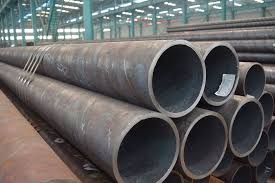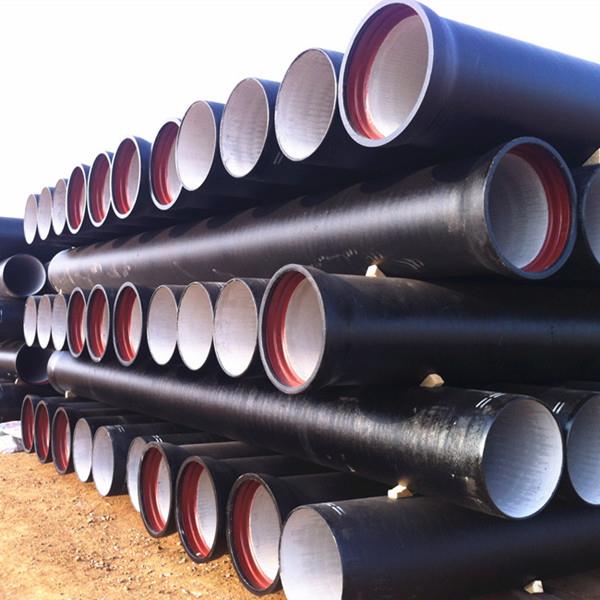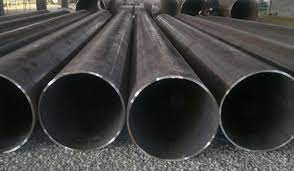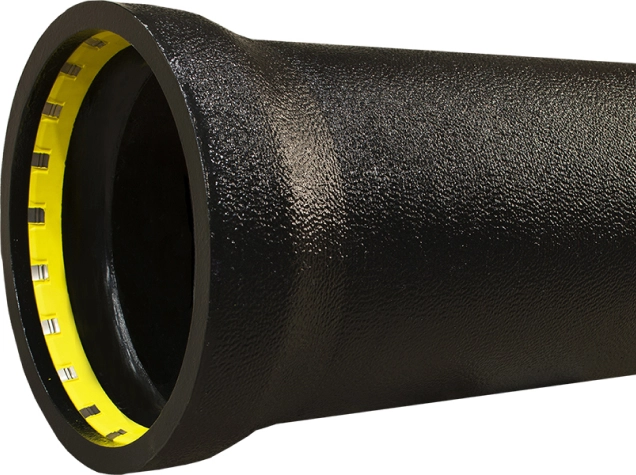Carbon Steel vs. Ductile Iron Pipes: Key Differences and Uses
2025-01-03 15:15:32 hits:0
1. Material and Structure Differences
Carbon Steel Pipes:

- Material: Carbon steel pipes are primarily composed of iron and carbon, with small amounts of other elements (such as manganese, silicon, etc.). Depending on the carbon content, they can be classified as low-carbon, medium-carbon, or high-carbon steel.
- Structure: Carbon steel pipes are generally made by rolling steel plates or strips, which are then welded or formed without welding to create seamless pipes. They possess relatively high strength and toughness.
Ductile Iron Pipes:

- Material: Ductile iron pipes are primarily made of cast iron, but unlike ordinary cast iron, they contain magnesium, which causes the graphite to form in a spherical shape, significantly improving their mechanical properties. Compared to standard cast iron, ductile iron has higher strength and toughness.
- Structure: Ductile iron pipes are typically made through casting processes and offer excellent moldability and formability.
2. Mechanical Properties Comparison
Carbon Steel Pipes:

- High Strength: Especially high-carbon steel pipes, which are suitable for applications where high mechanical loads are present.
- Good Toughness: Though good, it is generally inferior to ductile iron pipes, particularly under low temperatures, where carbon steel pipes may become brittle and fail.
- Poor Corrosion Resistance: Carbon steel pipes require special anti-corrosion treatments (such as coatings, galvanization, etc.), or they will rust easily.
Ductile Iron Pipes:

- High Strength: Ductile iron pipes have good strength, though slightly lower than carbon steel pipes. However, they offer better impact and vibration resistance.
- Excellent Toughness: They are particularly suited for environments where impact and vibration resistance are necessary.
- Superior Corrosion Resistance: Ductile iron pipes are more resistant to corrosion, especially in underground installations or harsh environmental conditions.
3. Manufacturing and Processing Techniques
Carbon Steel Pipes:

- Simple Manufacturing Process: Primarily involves cold rolling, hot rolling, welding, and other processes, making it suitable for mass production.
- Good Processability: Carbon steel pipes can be easily cut, welded, bent, and processed. However, they require anti-corrosion measures.
Ductile Iron Pipes:

- Complex Manufacturing Process: These pipes are produced using casting techniques, which are more complex and costly than the manufacturing of carbon steel pipes.
- Lower Processability: Ductile iron is harder than carbon steel, which makes further processing more difficult.
4. Cost Comparison
Carbon Steel Pipes:
- Due to the simpler manufacturing process and lower raw material costs, carbon steel pipes are generally less expensive.
- While the initial cost is low, additional costs may arise from anti-corrosion treatments or maintenance.
Ductile Iron Pipes:
- The manufacturing process is more complex, and the raw material costs are higher, making ductile iron pipes more expensive.
- However, due to their excellent corrosion resistance and longer service life, their maintenance costs are lower in the long term.
5. Usage Scenario Analysis
Carbon Steel Pipes:
- Oil and Gas Transmission: Due to their high strength, carbon steel pipes are widely used for transporting oil, natural gas, and other fluids.
- Power Plants and Chemical Industry Pipelines: Carbon steel pipes are commonly used in industrial pipelines where high pressure and temperature are involved.
- Waterworks: Carbon steel pipes are also used in high-pressure water distribution systems.
Ductile Iron Pipes:
- Municipal Water and Sewage Systems: Due to their excellent corrosion resistance and impact toughness, ductile iron pipes are ideal for water and sewage pipelines, particularly in underground installations.
- Wastewater Treatment: Ductile iron pipes are used in wastewater treatment facilities due to their ability to withstand harsh environmental conditions.
- Natural Gas Distribution: While carbon steel is more common for natural gas transmission, ductile iron pipes are also used in certain regions for gas pipeline construction.

 en
en  fra
fra  de
de  ru
ru  gle
gle  th
th  ara
ara  it
it  jp
jp  kor
kor  zh
zh 


